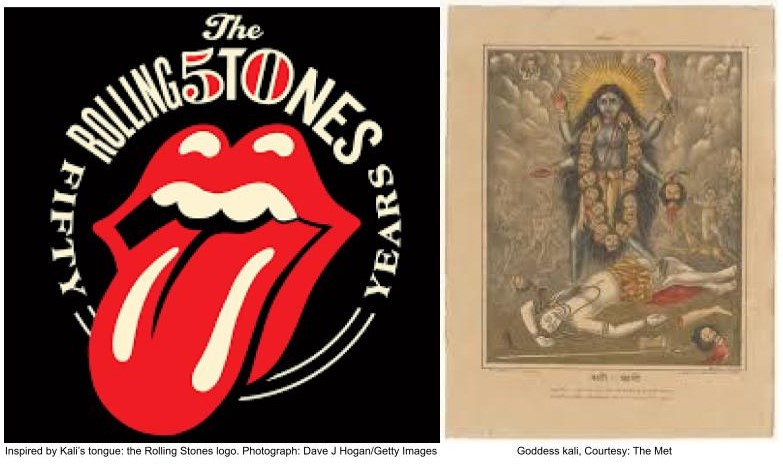Goddess Kali, one of the most important deities in Hindu mythology and tantric traditions, has transcended her religious origins to become a powerful and enduring muse for artists across cultures and generations. How, you ask? An example to support the above statement is the tongue-out logo of ‘The Rolling Stones’ inspired by the goddess’ tongue.
The compelling imagery and symbolism surrounding Kali have sparked inspiration, provoking myriad artistic expressions that delve into spirituality, feminism, and the eternal dance between creation and destruction for the West, India, and the rest of the world. In this exploration, we unravel the profound influence of Goddess Kali on art, tracing her impact across various mediums and artistic movements.
How did Kali influence Visual Arts in ancient times as well as contemporary?
Goddess Kali’s visual representation, with her dark complexion, multiple arms, and fierce countenance, provides artists with a rich tapestry of symbolism to explore. Traditional depictions of Kali in Indian art showcase her in dynamic poses, often engaged in the dance of destruction, symbolizing the cyclical nature of life. The intricate details, her necklace’s severed heads called the Munda-mala and her skirt made of arms are potent symbols of the impermanence of worldly attachments and the inevitability of time.
One of the oldest temples of Mahakali is situated in Sonipat and is said to be around 6000 years old. It is considered one of the Shakti Peeths, among the fifty-one Shakti Peeths, where the foot of Sati was found. Many forms and structures of Kali and her various forms are discovered by archaeologists from the eastern Himalayas and all over India in forms of Shakti Peeths, indicating that sculpting of the goddess was a very ancient practice in the Indian Subcontinent.
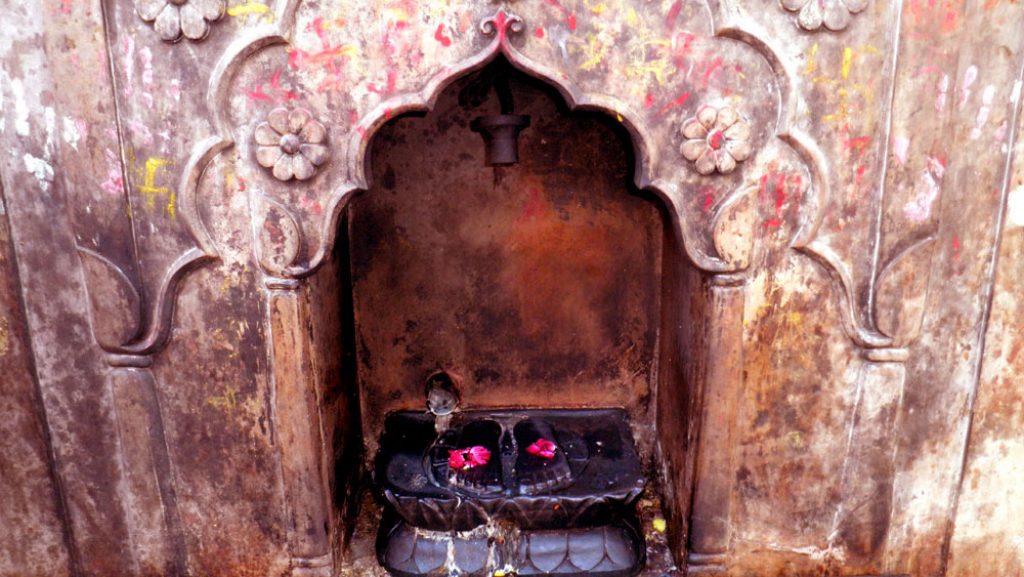
In modern times, Raja Ravi Verma surely popularised the paintings of Gods and Goddesses across India; hence, the paintings and murtis of Kali were popularized in Bengal, especially after the practice of Kalighat Paintings.

The fusion of traditional and contemporary elements in portraying Kali allows artists to reinterpret and infuse new meanings into her archetype. Modern artists often employ mixed media, digital art, and experimental techniques to capture the essence of Kali’s duality – the fierce warrior and the nurturing mother. Look at Sutapa Biswas’ ‘Housewives with Steak-Knives’ painting visually representing an ordinary woman who can be anyone worldwide, adapting the embodiment of Kali.
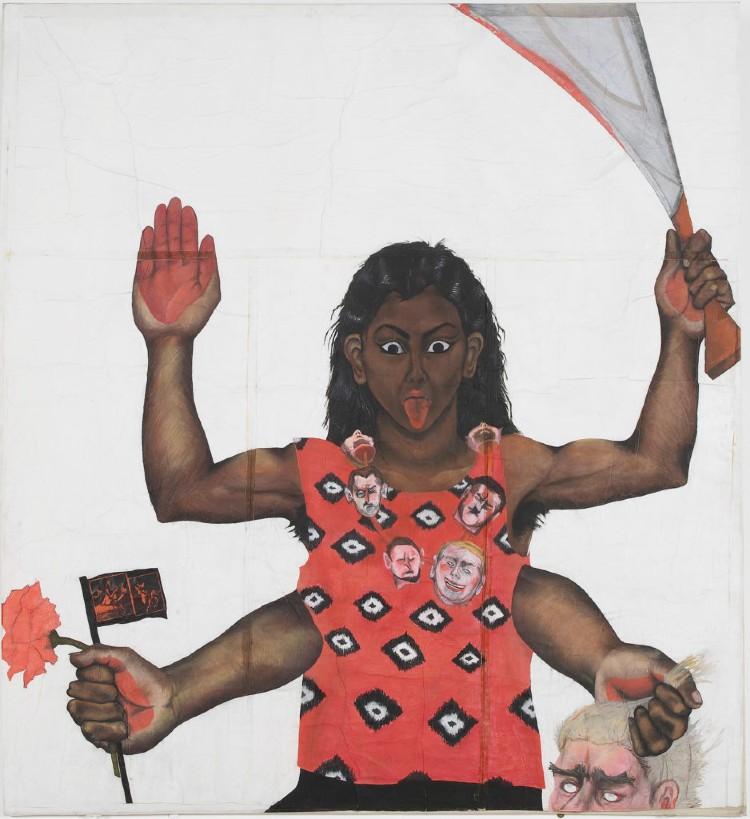
Courtesy: DACS
In the contemporary art scene, Kali continues to inspire artists to explore new mediums and push the boundaries of conventional representation. Installations, performance art, and multimedia projects often incorporate Kali’s imagery to address pressing social issues, spirituality, and the human condition. The fluidity of Kali’s symbolism allows artists to infuse their interpretations, resulting in a diverse range of artistic expressions that transcend cultural and religious boundaries.
Unsurprisingly, Kali is deeply associated with the Tantric tradition and has significantly influenced artists of various generations. Abir Pothi has created an entire series based on tantric art: Check it here
With its intricate mandalas and yantras, Tantric art seeks to visually represent the cosmic order and the interplay of opposing forces. Artists draw inspiration from the Tantric aesthetic, incorporating geometric patterns and symbols into their works to convey a sense of divine interconnectedness and the transcendence of duality.

Goddess Kali and the Bengal School of Art: A Confluence of Spirituality and Aesthetics
Bengal has always been a matriarch-worshipping region of India, with Shakti being the main philosophy. While there are several Shakti Peethas in Bengal(The most number in Bengal compared to the other states), the journey of seeking Kali as an inspiration starts from the narrow labyrinthine lanes and by-lanes of North Calcutta, the birthplace of Bottola art and literature in the late 18th and 19th century. This was also when Kalighat Pata originated and flourished near Kalighat Kali Temple.
The introduction of printing technology opened a market with immense possibilities. Goddess Kali’s picture was also printed on cigarette cases during the Swadeshi movement. The litho-graph process reproduced these pictures. However, it took a while for her to extricate herself from endorsing commercial products and spread across the city. Soon, Bengalis were captivated by her and accepted her as a household deity.
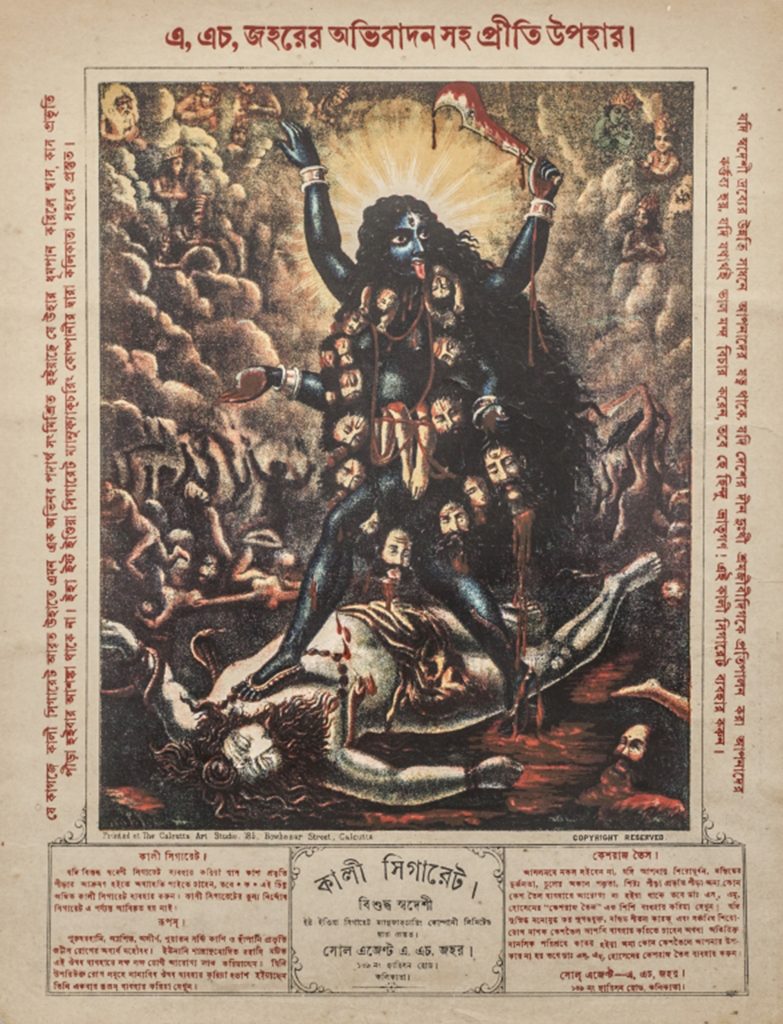
Courtesy: Eye for art
Famed artist Nandalal Bose had drawn a benign form of the goddess. Following that style, Dhirendranath Brahma had also painted a full-length portrait of the goddess. Long and bold lines defined her persona. Both Nandalal Bose and Dhirendranath Brahma have painted in the classical Indian form, blending it with Tibetan style. Both the artists wanted to infuse spiritualism in their delineation of Kali.
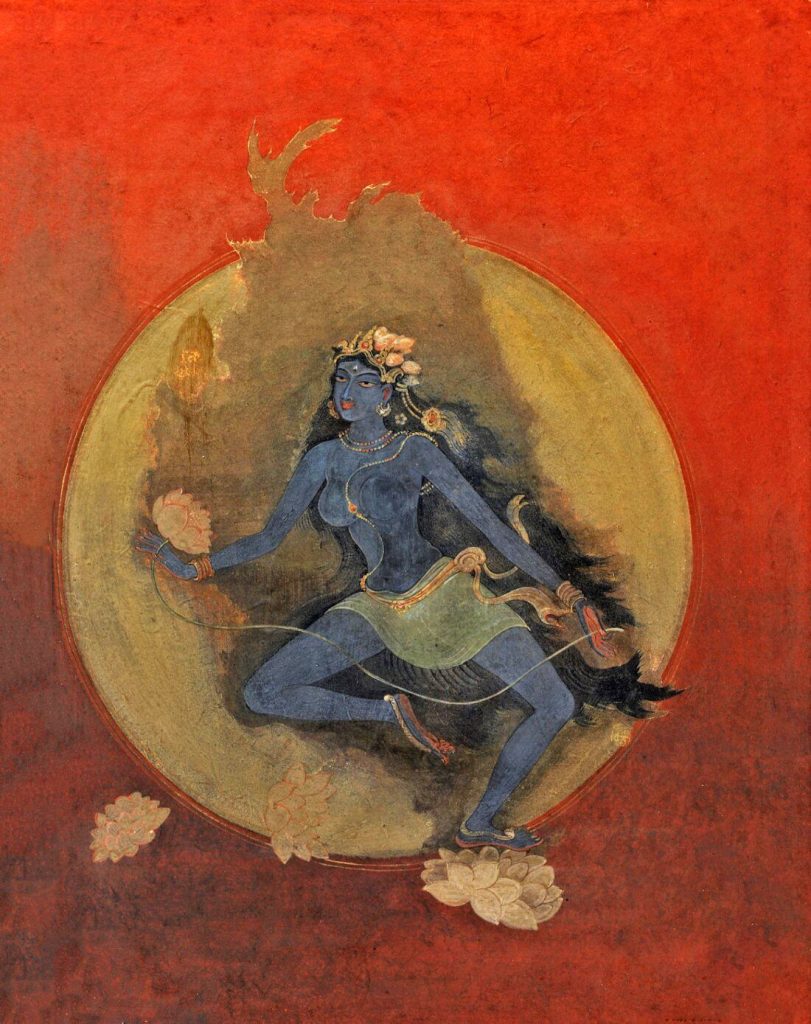
Contemporary artist Ganesh Pyne used the Kali motif in his Mahabharat series of paintings. Though there is no direct reference to Kali in the epic, the artist imagines Kali as the refuge for those endless warriors who die on the battlefield at Kurukshetra. The artist feels the ongoing march of discontented souls can find salvation in Kali. In this way, Bengal art gives us glimpses of the myriad ways Kali is portrayed.
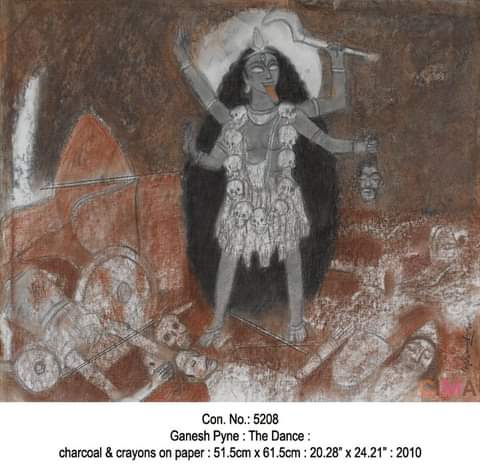
How does Kali influence Music, Dance and Performing art?
Kali’s mythology’s rhythmic and dynamic aspects resonate in various performing arts, particularly dance and music. Classical Indian dance forms, such as Kathak and Bharatanatyam, often incorporate Kali’s stories and symbolism into their choreography. The intense footwork and expressive movements mirror the fierce yet graceful dance of the goddess, creating a visual and auditory experience that embodies the divine energy she represents.
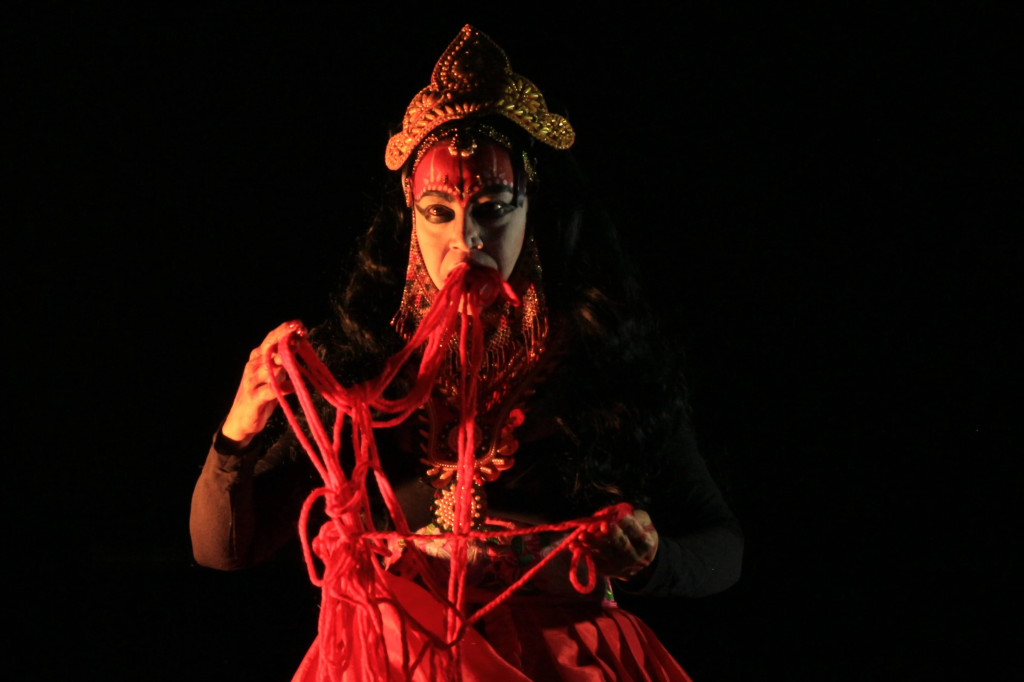
Conclusion:
Goddess Kali’s profound influence on art transcends religious boundaries, sparking creativity and contemplation among artists worldwide. Her multifaceted symbolism, encompassing creation, destruction, and the eternal dance of life provides a rich palette for artists to explore diverse themes and emotions. Whether in visual arts, literature, feminist expressions, or performing arts, the divine muse, Goddess Kali, continues to inspire and challenge artists to delve into the depths of spirituality and the complexities of the human experience.
Tuesday Talks| Ep- 08 | Insight Into the World of Tantric Art | Dr. Sama Haq | Abir Pothi

Pratiksha is an art enthusiast and writer.

